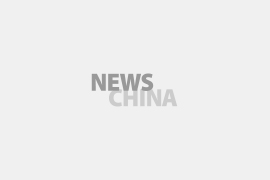he Political Bureau of the Communist Party of China (CPC) Central Committee held a meeting on July 30 to analyze the current economic situation and map out a path for the economy in the second half of 2025. It also makes proposals for the formulation of the forthcoming 15th Five-Year Plan, which charts the nation’s growth course from 2026 to 2030.
A new formula to “maintain steady policy efforts, while stepping up support when appropriate” has been introduced for the months ahead. This dual phrase indicates a balance between stability and adaptability. Pledging stability and continuity by “maintaining steady efforts,” the policy will also remain flexible, ready to “step up support” in response to evolving conditions and to deploy “policy reserves” as needed.
The Political Bureau, for the first time, called for enhancing the “attractiveness” of domestic capital markets, alongside strengthening their “inclusiveness.” This twin emphasis reflects a strategic recalibration. Enhancing attractiveness refers to drawing in high-quality companies and long-term funds to improve market liquidity and vibrancy.
Stronger domestic capital markets are expected to support financing for technology enterprises and innovation projects, thus accelerating the commercialization of new technologies. It also serves as a shield against external shocks and will uphold financial stability at a time when capital flows have grown more volatile between markets.
On boosting domestic demand, the meeting shifted its focus from the “Two New” initiatives – large-scale equipment upgrades and consumer goods trade-ins – to the “Two Priorities.” This means advancing major national strategies and strengthening security in key sectors, as well as boosting services consumption and the vitality of private investment.
The move signals a pivot from more spending to structural optimization. Infrastructure upgrades and industrial transformation aim to fortify economic foundations, while expanding service consumption is meant to spur jobs and innovation. Boosting private investment will target monopolistic barriers, fostering a more competitive and diverse market.
On trade, the meeting for the first time called for “optimizing export tax rebate policies.” The move underscores China’s resolve to stabilize the fundamentals of its foreign trade and foreign investment through fiscal and tax measures. It signals a shift in China’s opening-up policy from a flow-of-factors model to an institutional, rules-based framework, aligning more closely with high-standard global trade rules to boost both the scale and sophistication of its global competitiveness.
On reform, the meeting set out a “dual engine” strategy to drive new quality productive forces through technological innovation and building a unified national market. The first aims to create “new momentum” by boosting R&D investment and fostering emerging industries, the second to ensure the smooth flow of factors nationwide by dismantling local protectionism and curbing disorderly competition.
All of these dual-track policy moves formulate a coherent response to the challenges of China’s current development stage. This is neither a short-term stimulus package nor a recycling of old playbooks. Instead, it reflects a readiness to confront new contradictions with fresh thinking and coordinated action, through addressing both the symptoms and the underlying causes of structural pressure.
As these measures take root in the months ahead, the goal will be to achieve a fine balance: stabilizing growth without stalling structural improvement and enhancing resilience while sustaining momentum. If successful, the strategy set at this mid-year meeting will not only safeguard growth in 2025 but also set a firm foundation for a more innovative, open and competitive economy during the next five years.

 Old Version
Old Version